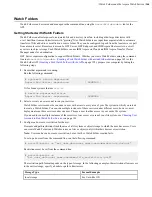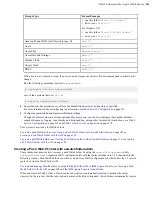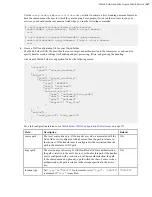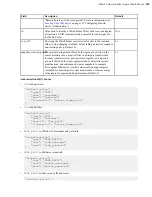
| Watch Folders and the Aspera Watch Service |
167
Use the
aswatchadmin
and
aswatchfolderadmin
utilities to retrieve a list of running daemons. Daemons
have the same name as the user for which they are running. For example, if you used the root user to run your
services, you should see the root daemon listed when you run the following commands:
# /opt/aspera/bin/aswatchadmin query-daemons
[aswatchadmin query-daemons] Found a single daemon:
root
# /opt/aspera/bin/aswatchfolderadmin query-daemons
[aswatchfolderadmin query-daemons] Found a single daemon:
root
4.
Create a JSON configuration file for your Watch Folder.
The Watch Folder JSON file describes the source, target, and authentication to the remote server, and can also
specify transfer session settings, file handling and post-processing, filters, and growing file handling.
A basic push Watch Folder configuration file has the following syntax:
{
"source": {
"path": "
source_directory
"
},
"target": {
"path": "
target_directory
",
"location": {
"type": "REMOTE",
"host": "
hostname
",
"port":
port
,
"authentication": {
"type": "
authentication_mode
",
"user": "
username
",
"pass": "
password
"
"keypath": "
key_file
"
}
}
},
"watchd": {
"scan_period": "
scan_period
"
}
}
For a full configuration reference, see
Watch Folder JSON Configuration File Reference
on page 175.
Field
Description
Default
source path
The local source directory. If the transfer user who is associated with the
Node API user is configured with a docroot, then the path is relative to
that docroot. If the transfer user is configured with a restriction, then the
path is the absolute or UNC path.
N/A
target path
The remote target directory. For SSH and Node API user authentication,
the path is relative to the user's docroot, or the absolute path if the transfer
user is configured with a restriction. For Shares authentication, the path
is the share name and, optionally, a path within the share. For access key
authentication, the path is relative to the storage specified in the access
key.
N/A
location type
Set
"type"
to
"REMOTE"
for the remote server.
"type": "REMOTE"
is assumed if
"host"
is specified.
"REMOTE"
















































